17 Interesting & Fun House Finch Facts You Never Knew!
Last Updated on
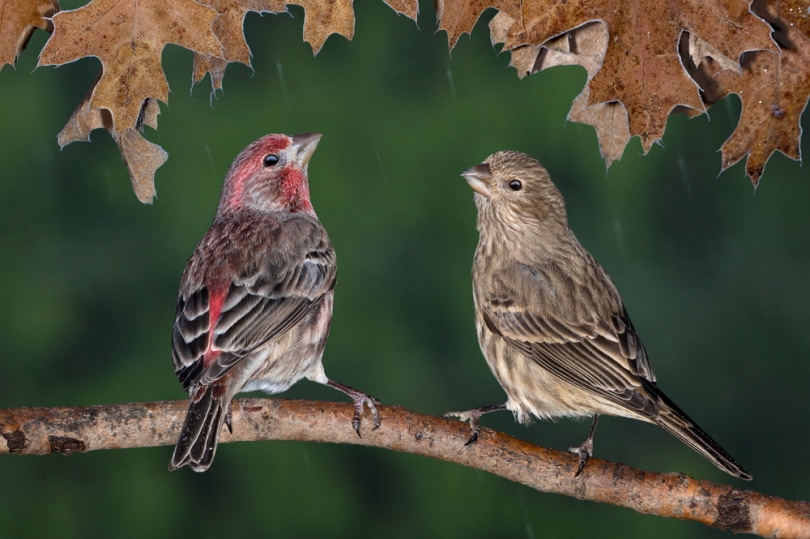
You may have noticed the sweet and cheerful presence of a House Finch brightening up your backyard, splashing about in your birdbath, or nibbling away at the seeds at your feeder. They’re adored and admired and are one of North America’s most popular backyard birds.
We have gathered some interesting and fun facts to help you learn more about these cosmopolitan birds.

House Finch Overview
| Scientific Name: | Carpodacus mexicanus |
| Common Name: | House Finch, Hollywood Finch, Linnet (not to be confused with the Common Linnet in Europe) |
| Lifespan: | 8-9 years |
| Size: | 6 inches |
| Weight: | .7-.8 ounces |
| Wingspan: | 10 inches |
| Conservation Status: | Least concern |
The 17 Interesting and Fun House Finch Facts
1. The House Finch Is One of the Most Common Bird Species in North America.
The House Finch is one of the most common backyard birds and is widely distributed in North America. It was once only found in the western United States, but after being introduced to New York in the 1940s, its population grew in the east as well.
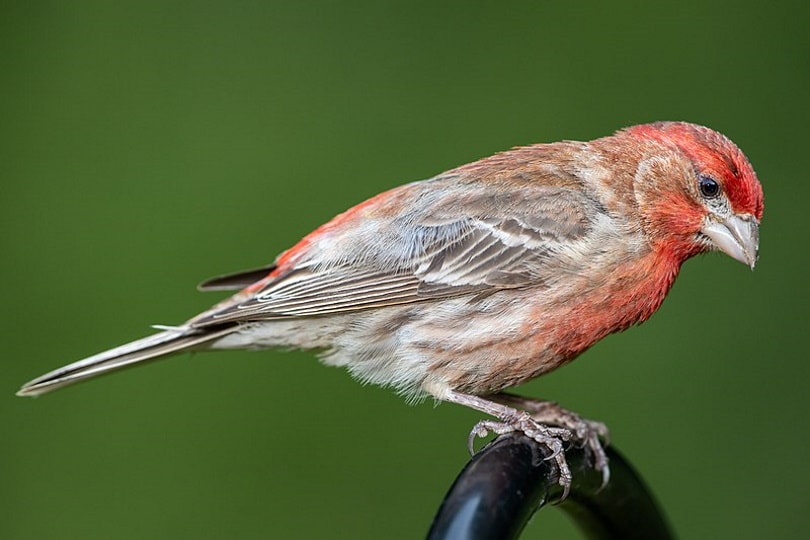
2. House Finches Spread to the Eastern United States After Being Released From Illegal Trade
House Finches were only found in western parts of the United States until 1940 when a pet store in New York sold illegally caged House Finches. The pet store released the birds to avoid prosecution. The birds thrived in the wild, and their population grew and spread across eastern parts of the U.S.
3. House Finches Can Look Different Depending on Where They Live
House Finches can come in 11 recognized subspecies. Their body shape, bill size, wingspan, coloring, and tail length look different depending on the region where they live. For example, finches in the east have longer, pointier wings as they are better suited for longer flights.
4. The House Finch Is One of the Most Common Attractions at Bird Feeders.
The House Finch is one of North America’s most popular backyard birds and is highly attracted to bird feeders. They are often spotted at bird feeders eating various seeds, and their favorite treat is the black oil sunflower seed.
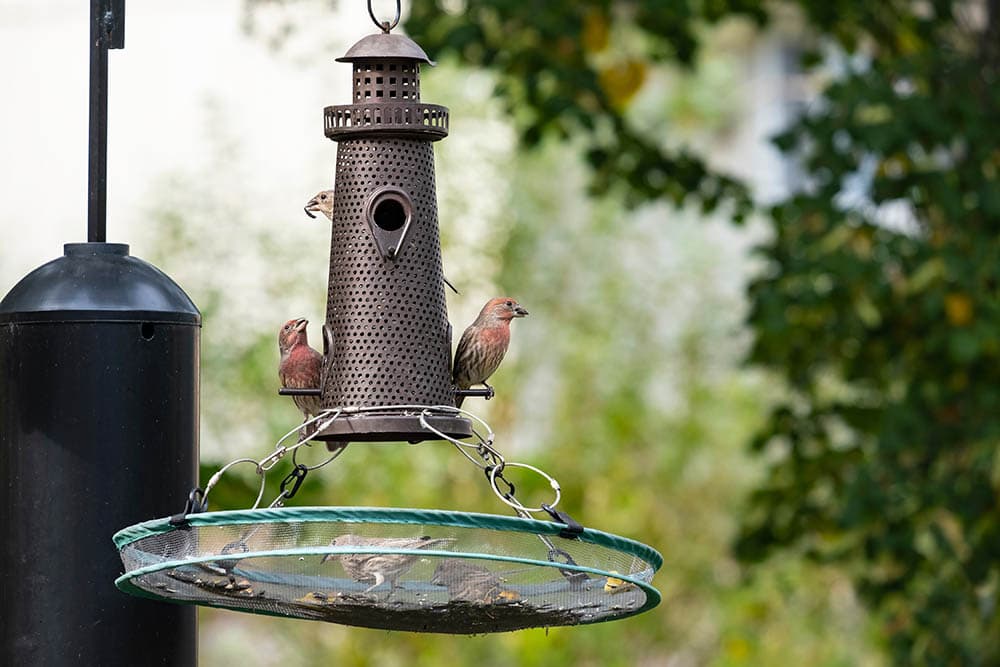
5. House Finches Huddle Together for Warmth
When House Finches roost at night, they huddle together for warmth. They will use the same roosting spot repeatedly.
6. House Finches Are Vocal Birds
The House Finch regularly sings and calls at any time of the year. While they are perched or in flight, you can hear a sharp cheap sound, and their song is high-pitched with a succession of changing notes and a rising buzz at the end.
7. House Finches Need a Lot of Water
House Finches are well adapted to high climates but still need a lot of water. They need an equivalent of 20% of their body weight per day. Succulents and fruits and flowers of cacti luckily provide them with enough hydration.
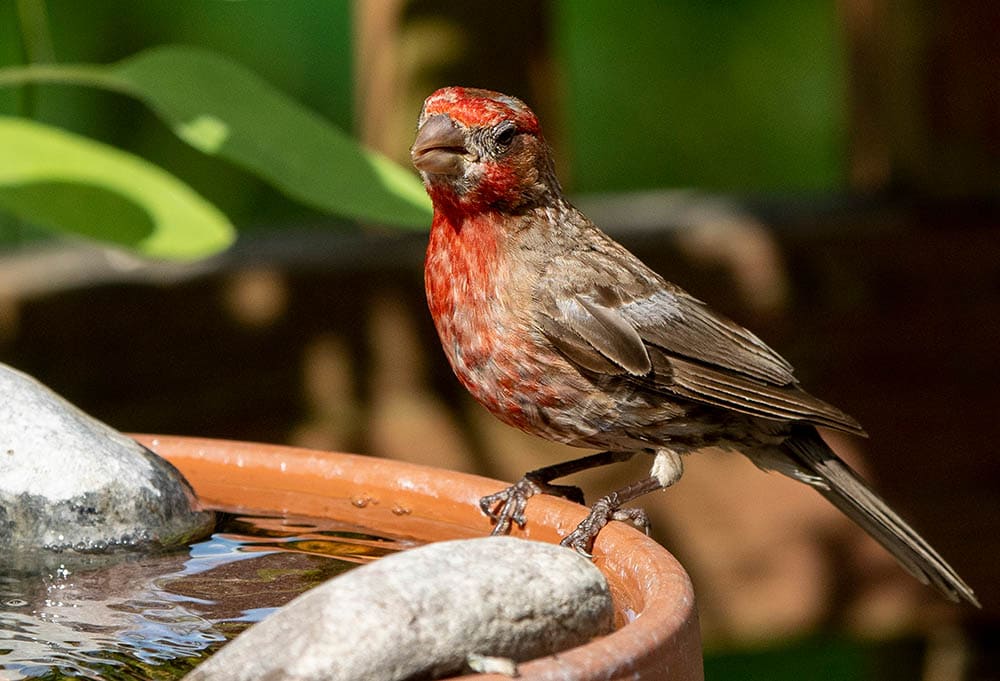
8. They Are Strict Vegetarians
House Finches feed on buds, seeds, and fruit throughout the year. They pick the seeds carefully from plants, reaching the nutritious kernel after nibbling away at the hull. Unlike other seed-eating birds, they do not switch to eating insects in the summer nesting season.
9. Male House Finches Feed Females During Courtship
Males will sometimes feed the females during courtship. This display begins with the female gently pecking at the male’s bill while fluttering her wings. The male replicates regurgitating food to the female several times before feeding her.
10. The House Finch Pandemic Has Been a Problem for the Species for Decades
A type of conjunctivitis has plagued the House Finch for several years. This bacterium has caused a decline in its population, making it a pandemic for the species. An infected bird will have red and swollen eyes, which leads to blindness over time. This causes them to be vulnerable to predators, making them an easy target. Keeping bird baths and feeders clean is vital since this disease is spread through contact.
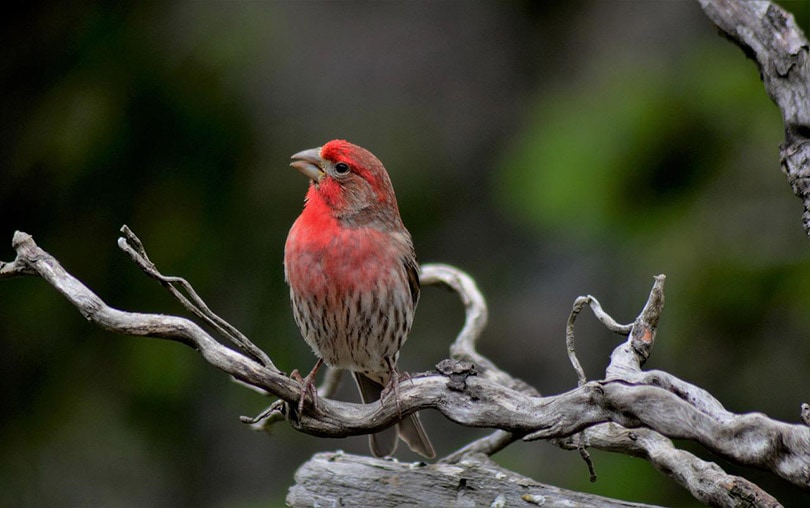
11. The Male Finches Red/Orange Plumage Comes From Compounds in Their Food
The bright red and orange color found on the chest, crown, and throat of a mature male House Finch comes from compounds found in their food. These carotenoids are the same pigments in tomatoes and carrots. The bright color signifies a well-fed male, making them more attractive to the females.
12. They Are Highly Attracted to Sodium Salt
House Finches are highly attracted to sodium and often survey the land for sources of the mineral.
13. They Can be Aggressive
House Finches are territorial around food and nests sites and become aggressive, especially at feeders. They have a rivalry with House Sparrows since they are also granivorous eaters.
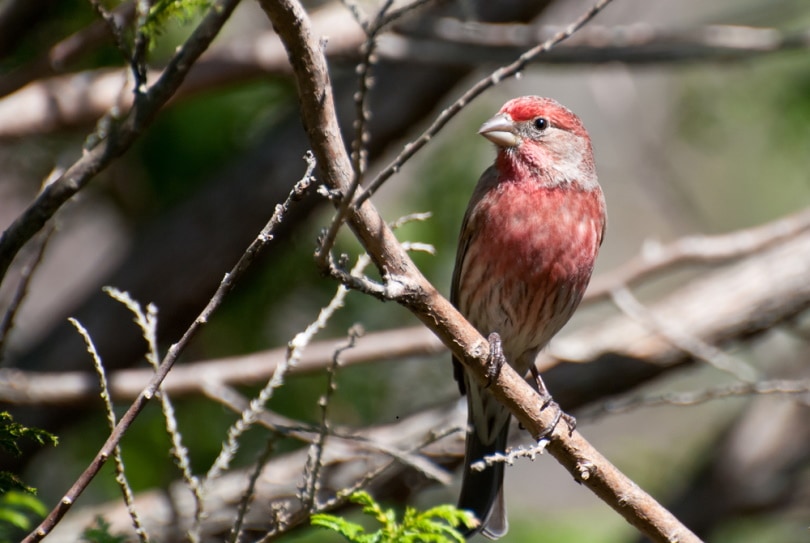
14. They Can Be Found in a Wide Range of Habitats
House Finches are highly adaptable and can be found in shrubby fields, open woodlands, and arid deserts. They are also common in urban and suburban areas as well.
15. City Finches Are Savvy
House Finches that live in cities and towns have adapted to the issues of urbanization. The human presence in their habitats has affected their behavioral and foraging habits, making them savvier.
16. The Mother May Lay Female Eggs First Due to Mite Infestation in Males
Male chicks are more prone to mite infestation, and the mother House Finch can lay eggs containing females first to reduce the time the males are exposed to mites.

17. In Native American Traditions, Finches Are Associated With Celebration and Joy
In Native American traditions, Finches are regarded as omens for “good things to come” and are often associated with celebration and joy.

House Finch Conservation
Although the House Finch is not endangered, they are exposed to threats like outdoor cats and window collisions. Some diseases, namely the eye disease conjunctivitis, can reduce the population of House Finches.
Tips For Backyard Birders
The House Finch is one of the easiest birds to attract to your feeder. Their favorite seed is the black oil sunflower seed, but they will feast on other varieties, including millet.
Socks make great feeders for the House Finch because the birds can hang on them, and the seeds are easily accessible. Seed-bearing plants, berry bushes, small fruit trees, and grasses provide an attractive, bird-friendly landscape that is ideal for the House Finch. Bird baths are also important to the House Finch, and they often nest in birdhouses or garden pots.

Final Thoughts
The House Finch is a beautiful bird that is a joy to have in your backyard. They can keep you captivated for hours with their social nature and sweet melody. Through organizations like The Great Backyard Birdcount, you can help record sightings to assist conservationists and data researchers.
Now that you have acquainted yourself with the House Finch, you can enjoy them with a much deeper appreciation.
Featured Image Credit: Cathy Keifer, Shutterstock
Table of Contents
- House Finch Overview
- The 17 Interesting and Fun House Finch Facts
- 1. The House Finch Is One of the Most Common Bird Species in North America.
- 2. House Finches Spread to the Eastern United States After Being Released From Illegal Trade
- 3. House Finches Can Look Different Depending on Where They Live
- 4. The House Finch Is One of the Most Common Attractions at Bird Feeders.
- 5. House Finches Huddle Together for Warmth
- 6. House Finches Are Vocal Birds
- 7. House Finches Need a Lot of Water
- 8. They Are Strict Vegetarians
- 9. Male House Finches Feed Females During Courtship
- 10. The House Finch Pandemic Has Been a Problem for the Species for Decades
- 11. The Male Finches Red/Orange Plumage Comes From Compounds in Their Food
- 12. They Are Highly Attracted to Sodium Salt
- 13. They Can be Aggressive
- 14. They Can Be Found in a Wide Range of Habitats
- 15. City Finches Are Savvy
- 16. The Mother May Lay Female Eggs First Due to Mite Infestation in Males
- 17. In Native American Traditions, Finches Are Associated With Celebration and Joy
- House Finch Conservation
- Tips For Backyard Birders
- Final Thoughts
About the Author Robert Sparks
Robert’s obsession with all things optical started early in life, when his optician father would bring home prototypes for Robert to play with. Nowadays, Robert is dedicated to helping others find the right optics for their needs. His hobbies include astronomy, astrophysics, and model building. Originally from Newark, NJ, he resides in Santa Fe, New Mexico, where the nighttime skies are filled with glittering stars.
Related Articles:
10 Types of Hummingbirds in Arkansas (With Pictures)
8 Types of Hummingbirds in Nebraska (With Pictures)
5 Types of Hummingbirds in Idaho (With Pictures)
3 Types of Hummingbirds in Mississippi (With Pictures)
8 Types of Hummingbirds in Kansas (With Pictures)
5 Types of Hummingbirds in West Virginia (With Pictures)
5 Types of Hummingbirds in Ohio (With Pictures)
Where Do Nuthatches Nest? Nuthatch Nesting Habits Explained
